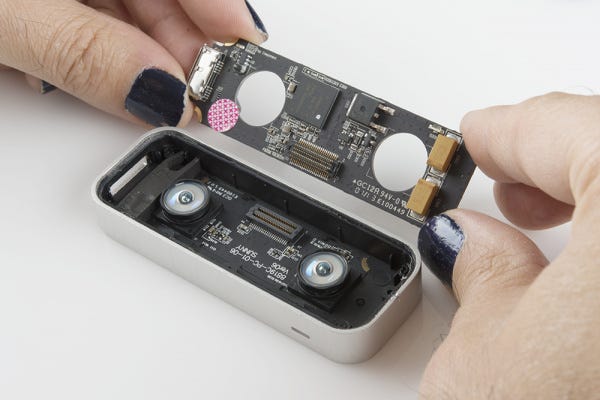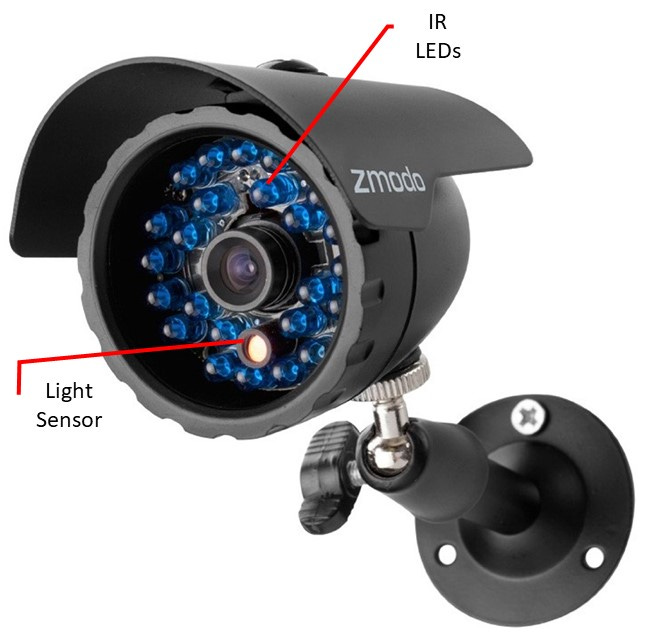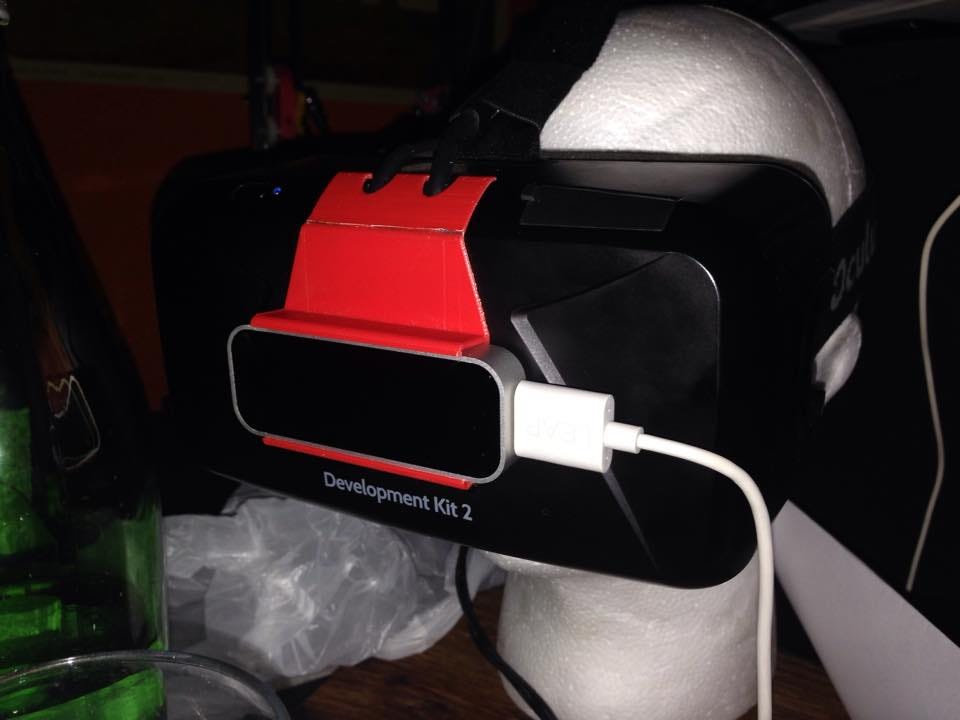Leap Motion
or how I experienced my first Johnny Mnemonic moment
There was a glitch in the matrix a decade ago when a top-of-the-line hand-tracking device was available for a short time on AliExpress for as little as $30. Even today you will be hard to press to find it under $50. When I saw it I could not believe it and was expecting to receive a brick or some other nonfunctional piece of technology but to my surprise, it was the actual gear. At that time, in 2015, it was normally well over $150. The 2025 version of Leap Motion costs around $220+ with some models going into the $300+ range. That’s too much for casual interest, but to get you started you can still visit eBay and get the V1 for cheap.
Inside are basically two monochrome IR webcams with three infrared LEDs acting as illuminators. This allows the cameras to see in a low-light environment without producing visible light since IR light (850nm) is not visible to humans but is to cameras. Most cameras have an IR filter. If you look closely at any camera you will notice a slight red tint to it, that’s the IR filter.
For more about IR cameras check out my post about
Secret simple Night Vision
It is a public secret that all our cameras are actually night vision cameras, with a caveat. Digital camera sensors are much more sensitive than needed for normal photography. That’s why all consumer cameras, be it DSLR or smartphone cameras, have filters on them to limit their sensitivity to visible light.
The stereo view enables the driver to isolate and detect hands with all joints present. There is a big drawback, however. Because it is vision based any digit that is obscured has a higher possibility of being mispositioned. This is mitigated by taking into account how the actual human hand can move as some positions for fingers are physically impossible.
There are many uses for this technology. One is touchless interfaces which UltraLeap showcases on their website. It allows kiosks and other such terminals to use their technology without touching the screen which in the Covid and post Covid era is really interesting.
They demoed this technology some 11 years ago. If they were more lax with their IP restrictions and cost maybe more kiosks would use that technology before 2020. Even today I have not seen any public kiosk use it.
Back in the day, there was a launcher with different apps and you could play with them, now the selection is barebones. There was a plugin for the Google Earth desktop version that allowed Leap Motion to be used a a sort of camera controller.
But the true power comes out if you pair it with a VR headset. So, I did. I printed out the set of holders for the Oculus DK2 (note that this was in 2016) and I must admit, it is the best VR experience I ever had up to that point. There is something about not having anything in your hand and naturally interacting with VR space that makes it magical. It transforms the experience from impressive to simply amazing.
I lost my footage of it but here is a video from Leaps YouTube and it demonstrates it perfectly. It looks basic, which it is, but I spent hours upon hours playing with block and gravity in that simple simulation. The only thing that would make it even more surreal is if there was some tactile feedback :)
I’m still blown away that this technology was not incorporated more in all sorts of devices, especially in VR headsets. It’s even more puzzling since this technology existed since around the 2010s. Only thing I could reason out is that developers didn’t build experiences specifically for it due to its limited install base, creating a chicken-and-egg problem: without widespread hardware adoption, software support lagged, and without compelling software, headset makers saw little reason to integrate it. Kind of like Xbox Kinect, remember that addon?
Oculus added that feature some 6 years ago to Oculus Quest and made significant improvements to it with Meta Quest 3 putting any ambition of LeapMotion to enter VR consumer space to rest.
Still, UltraLeap is a player in enterprise solutions where cost is not that important as is accuracy and reliability.
Sadly almost every consumer grade VR device has hand tracking so it’s not that novel anymore but if you need a touchless interface this certainly is the way to go.





